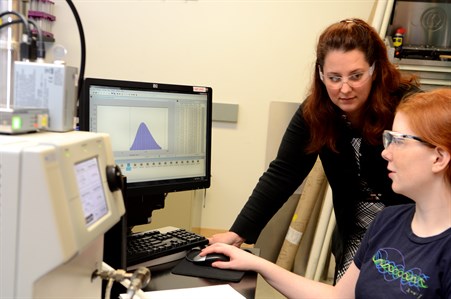 Air pollution remains a major health hazard for our nation despite significant improvement in the United States' air quality since the passage of the Clean Air Act and formation of the Environmental Protection Agency (EPA) in 1970. Globally, air pollution is the largest environmental risk to human health. It rivals known risk factors including smoking, alcohol use and malnutrition. Technological improvements such as catalytic converters and particulate filters have yielded immense health benefits, but many challenges remain.
Air pollution remains a major health hazard for our nation despite significant improvement in the United States' air quality since the passage of the Clean Air Act and formation of the Environmental Protection Agency (EPA) in 1970. Globally, air pollution is the largest environmental risk to human health. It rivals known risk factors including smoking, alcohol use and malnutrition. Technological improvements such as catalytic converters and particulate filters have yielded immense health benefits, but many challenges remain.
Dr. Andrea Strzelec, assistant professor in the Department of Mechanical Engineering at Texas A&M University, is the director of the Combustion and Reaction Characterization Laboratory (CRCL) where she and her graduate students are focused on further reducing the pollution from automotive exhaust via their research on exhaust aftertreatment devices.
Catalytic convertor is the generic name associated with exhaust aftertreatment devices found on vehicles. These devices convert engine out emissions into safer and cleaner gasses. To meet Federal emissions standards auto manufactures control diesel emissions through the use of five major types of after treatment devices: the Diesel Oxidation Catalyst (DOC); Diesel Particulate Filter (DPF); Lean NOx Trap (LNT); Selective Catalytic Reduction (SCR) Catalyst which are used for diesel engines; and the Three-Way Catalyst (TWC) for gasoline engines.
Strzelec’s lab has projects related to several of these devices. Her team is working to develop new formulations that work over a larger range of conditions and use lower amounts of expensive precious metals. Strzelec is particularly interested in particulates because they have been shown to be a hazard to both human health and the environment. The team is investigating particulate matter from both diesel and gasoline direct injection engines, in anticipation of Gasoline Particulate Filters (GPFs) being required on vehicles in the future.
For the DOC or the TWC oxidation catalysts to work properly — turning toxic species such as carbon monoxide and hydrocarbons into the innocuous products of water and CO2 — they must first reach their “light-off” temperature. When a vehicle is first started (the cold-start condition), the electronic control unit (ECU) instructs the engine to run fuel-rich for a few seconds to heat the catalyst to the required activation temperature as quickly as possible. It is the ECU, often referred to as the vehicle’s on-board computer, which controls the fueling rate; engine performance and the emissions control devices as the vehicle is being run.
The ECU keeps track of the catalyst temperature and adjusts it to keep it hot enough to be active by regulating fueling. The fuel that goes to keeping the catalyst from experiencing light-out (getting too cold to be effective) then does not go to the motive power and is often referred to as a fuel penalty, and is seen as a reduction in fuel economy or miles per gallon rating to the driver. Improved catalyst materials, like the ones Strzelec’s group is working on, can reduce this fuel penalty.
When manufactures test a vehicle to ensure it will meet the EPA standards, they place the vehicle on a chassis dynamometer — a set of power-absorbing rollers — that allows the vehicle to be run through simulated real-world driving scenarios without moving. In fact, the vehicle is locked in place for this testing. Recently, it has come to light that some ECUs were programmed to recognize when they were on a dynamometer (the ECU recognized the hallmarks: only two of four wheels turning, no motion in the steering wheel) and only make sure that the emissions were being met during that time. Leveraging her joint appointment with the Texas A&M Transportation Institute, Strzelec’s team uses a chassis dynamometer as well as the more relevant Portable Emission Measurement System (PEMS), when evaluating the viability of their materials.
PEMS units are small, portable devices that fit in the trunk of a car and attach to the tailpipe to measure emissions in real time as the vehicle is driven on the road. In this case, the vehicle cannot tell it is being evaluated and is experiencing the same conditions that it might for the consumer, making PEMS a better method to evaluate the vehicle’s emissions.
Strzelec believes her research will lead to the improvements upon the current emissions devices installed on vehicles, and perhaps the implementation of new, highly-efficient and lower cost catalytic materials. For a closer look at emissions research being led by Strzelec and discussion of the EPA testing issues currently in the mainstream news, visit the laboratory’s website.